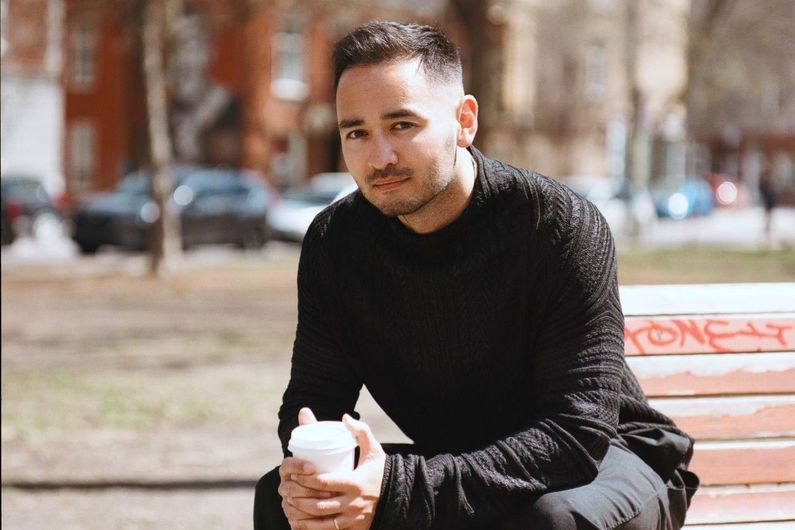Professor Shin Koseki appointed UNESCO Chair in Urban Landscape at Université de Montréal
- UdeMNouvelles
05/17/2021
- Mylène Tremblay
New UNESCO Chair Shin Koseki is passionate about politics, social justice and sustainable development. He plans to step up efforts aimed at improving quality of life.
During 15 productive years abroad, Shin Koseki took part in a student exchange program in Switzerland while working on his bachelor’s degree in architecture at UdeM, earned a master’s degree and a PhD in architecture and urban planning from the Federal Institute of Technology in Lausanne, and embarked on a brilliant research and teaching career spanning institutions in Switzerland, England, Singapore and Italy.
The Montréal researcher recently returned to Canada and has continued his work in the fields of the environment, new technologies, democracy and education at his alma mater, first as assistant professor in the School of Urban Planning and Landscape Architecture at the Faculty of Environmental Design (since January 1, 2021) and now as holder of the UNESCO Chair in Urban Landscape at Université de Montréal (CUPUM). Known as one of the most dynamic of the approximately 600 UNESCO chairs because of its activities, its influence and its commitment to the preservation, enhancement and development of urban landscapes, the Chair gives him the latitude he needs to put his knowledge to use.
“For years, my work has focused on issues of justice and sustainability in urban settings, the incorporation of new technologies into planning practices, and the development of interactive democracy to meet public needs,” Professor Koseki told us in a video interview. “I see this appointment as a springboard for promoting the subjects I care about and sharing them with other partners internationally.”
Priority project: the St. Lawrence River
One of the first projects he plans to tackle with the other researchers at the UNESCO Chair is the revitalization and renaturalization of the St. Lawrence River shoreline and ways to improve the quality of life in riverside communities. “The St. Lawrence River and its tributaries drain a quarter of the world’s fresh water,” Professor Koseki points out. “From an ecological, social, cultural, economic and political point of view, it is a vitally important geographical area that presents a number of challenges, but also hold great potential for solving problems of climate change, urban sprawl and social inequality.”
To bring this project to fruition, he plans to create a citizens’ assembly on governance of the St. Lawrence River and to refocus “WAT UNESCO” – the field workshops organized each year by the Chair in different parts of the world to address social, cultural and environmental issues in urban planning – on the urbanization of great rivers. “It’s a way to build a collective knowledge base among cities located along major rivers, such as Montréal, Cairo and Rotterdam, and to draw inspiration from best practices elsewhere,” he explains.
The power of interactive democracy
Professor Koseki drew the idea of a citizens’ assembly, where everyone has the opportunity to propose solutions, have input into the decision-making process and implement the solutions, directly from his experiences as a policy maker with his urban planning research group, the Rhizome Chôros, which he co-founded in Paris five years ago.
Recently, he and his colleagues acted as scientific observers at two interactive democracy forums in France: the Citizens Convention for Climate, which discussed how to significantly reduce greenhouse gas emissions by 2030, and the Public Debate on Agriculture, which asks citizens to contribute their ideas about the European Union’s next Common Agricultural Policy.
“These events have clearly shown that, given the chance, citizens propose measures that are more innovative than those put forward by elected officials,” says Prof. Koseki. “Because they are not constrained by partisan or economic considerations, they can make free decisions, and this freedom allows them to come up with very inventive policies.”
The new UNESCO chairholder wants to import this interactive process, which is practically non-existent in North America, and adapt it to local social, cultural, economic and political conditions. Hence the plan for a citizens’ assembly on governance of the St. Lawrence River.
Creating the world we want to live in
Architect, urban planner, policy maker, programmer and dance photographer in his spare time, Shin Koseki is a proactive dynamo with a host of other projects in mind. What drives him? “The good of humanity!” he answers with a broad smile. “If you want to make things happen in society, you have to put time and energy into it. You can’t wait for things to improve on their own. I like to propose solutions, avenues for research, and new ideas. Working to create the world we want to live in is what will turn it into reality one day.” Clearly, the UNESCO Chair in Urban Landscape at Université de Montréal is in good hands!
The UNESCO Chair in Urban Landscape at Université de Montréal is supported by the Sid Lee Architecture Fund, the Fonds de recherche du Québec, the Direction des affaires internationales and the Faculty of environmental design of UdeM.













